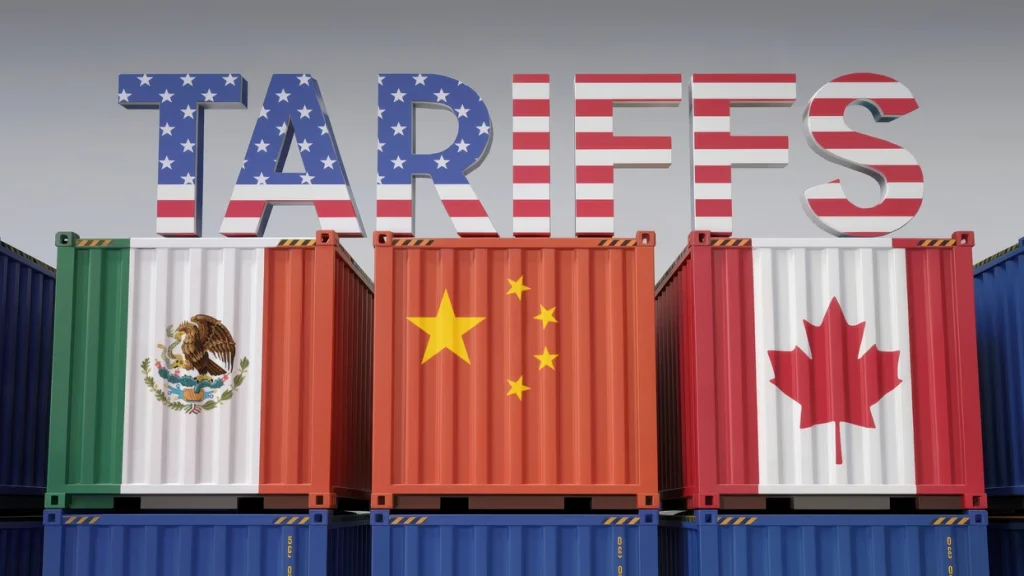
Tariffs are back in fashion — again. Some politicians love them. Pundits love to debate them. They’re tough-sounding, crowd-pleasing, and give the impression that someone is finally standing up for American workers.
There’s just one problem: they don’t work — at least not the way we need them to.
Sure, tariffs sound great in campaign speeches. “Let’s tax foreign imports, bring factories home, and rebuild the middle class.” The rhetoric is nostalgic, nationalistic, and — unfortunately — economically naive.
Let’s be clear. Tariffs aren’t inherently evil. In limited, strategic use, they can buy time for critical industries. But when wielded as a broad, blunt policy — as a primary economic lever — they just don’t deliver results. They create a cascade of consequences that hurt far more than they help.
Here’s what really happens when you build a wall around the economy instead of investing in its foundation:
1. Tariffs won’t fix the trade deficit
Yes, they reduce imports. But they also reduce exports. Why? Because other countries retaliate, and a stronger dollar makes US goods even more expensive. You don’t “rebalance” trade by slowing everything down. That’s like fixing traffic by banning cars.
2. Manufacturing won’t come roaring back
We’re not living in 1955 anymore. US factories can’t just reopen and start making TVs and sneakers. Modern manufacturing is capital-intensive, automated, and globally distributed. Tariffs raise the cost of doing business — they don’t attract it.
3. US exports lose their edge
Tariffs also make it more expensive to produce goods in America. Pair that with a rising dollar, and you’ve priced yourself out of international markets. Suddenly, the “Made in the USA” label looks more like a premium surcharge than a selling point.
4. Consumers pick up the tab
Tariffs are a tax — and not on foreign producers. They are on you. Everything from groceries to electronics goes up in price. You may not notice it at first, but your wallet will. Inflation certainly doesn’t need much more help these days, but tariffs are happy to pitch in.
5. Other countries will punch back — and aim to hurt
Trade wars aren’t fistfights — they’re chess matches. And other nations will go after US exports where it hurts: agriculture, aerospace, tech, etc. Tariffs don’t just invite retaliation — they guarantee it.
6. Store shelves get thinner — and more expensive
Say goodbye to cheap imported goods and hello to smaller selections and bigger price tags. Some items vanish entirely. No, it’s not a supply chain apocalypse — it’s just tariffs doing what they do best: making things harder to get hold of… and costlier too.
7. Export-reliant jobs disappear
Industries like biotech, machinery, and farming rely on global markets. Tariffs reduce their access, kill demand, and shrink payrolls. Whole regions feel the hit. If you’re building walls, don’t be surprised when opportunities stop knocking.
8. Supply chains start to crack
Modern business runs on global inputs. Tariffs disrupt the flow, raise the costs, and force companies to scramble for alternatives. Often, those alternatives are slower, more expensive, and less efficient. Sometimes, companies just pack up and go elsewhere.
9. The economy slows — or worse
Put it all together: higher costs, weaker exports, lost jobs, reduced investment. That’s not “taking back control.” That’s how you drag your economy into a slowdown — or kick off a recession if you’re really ambitious.
10. AI gets weaponized, not optimized
Under pressure, companies will embrace automation — but not the good kind. Not the kind that augments jobs or drives productivity. The kind that slashes headcount. Tariffs don’t incentivize innovation. They incentivize downsizing.
11. Even if factories come back, workers won’t
Let’s assume — generously — that tariffs succeed in nudging companies to bring some manufacturing home. There’s still a problem: we don’t have the workforce. Skilled labor in the US is in short supply. We’ve spent decades underinvesting in vocational training and tech education. You can build the factory, but who’s going to run it? Maybe start investing in building the workforce of the future before living in the past?
The Real Problem Isn’t Imports. It’s Incentives. More carrot and less stick, please…
The US doesn’t need more barriers — it needs better magnets. If we want to rebuild our industrial base, we need to make America the best place to invest, build, and hire.
That means:
Modernizing infrastructure so supply chains can run efficiently
Incentivizing domestic production with smart tax policy, not tariffs
Training a skilled workforce through serious investment in vocational and technical education
Stabilizing regulatory and trade policy so companies can plan for more than 18 months at a time
Supporting R&D and automation that drives innovation, not job loss
In short, the US needs a carrot, not a stick. You don’t grow a competitive economy by punishing everyone who isn’t domestic. You grow it by building the kind of environment where global businesses want to stay, invest, and scale.
Bottom Line: Tariffs don’t make things — they break things
They disrupt supply chains, confidence, and growth. While they may win applause at rallies, they lose traction in the real economy.
If the US wants to lead the next industrial revolution, we need to stop weaponizing policy and start investing in capability. We must compete smarter, build stronger, and attract better talent.
Tariffs are a headline. Strategy is what comes after.
Posted in : Artificial Intelligence, Automation, Economics and Geopolitics, Sourcing Best Practises, Sourcing Change Management, Supply Chain






